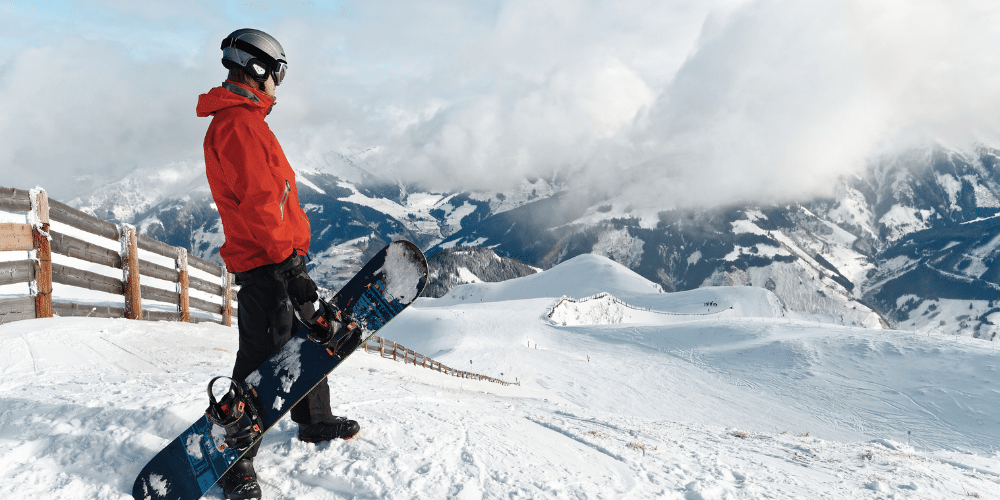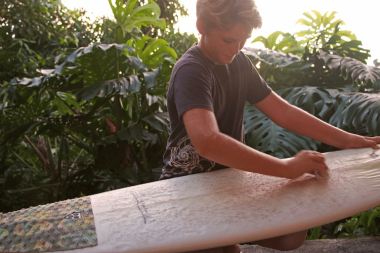How to wax a snowboard?If you’re new to snowboarding, you might be wondering how to wax your board. It’s not as difficult as it looks, and it’s definitely worth doing if you want to keep your board in good condition. In this blog post, we’ll show you how to wax a snowboard in just a few simple steps.
What is snowboarding?
Snowboarding is a winter sport that involves riding on a snowboard down a slope, usually while performing stunts. It can be performed in half-pipe, quarter-pipe, and big air competitions, among others. waxing your snowboard is important because it helps to protect the board from the elements and keeps it in good condition.
The Different Types of Snowboards
There are four main types of snowboards: freestyle, all-mountain, race, and powder.
Freestyle: A freestyle board is typically shorter and has Twin Tip Technology, which makes it easier to do spins and other tricks. If you’re mostly interested in riding in the terrain park or half pipe, this is the type of board for you.
All-Mountain: An all-mountain board is good for both groomed trails and powder. They’re often a bit longer than freestyle boards and have a directional shape, which means they’re meant to be ridden primarily in one direction.
Race: Race boards are designed for speed and are often used in competitions. They’re narrower than other types of boards and have sharp edges to help with turning.
Powder: Powder boards are wider than other types of boards and have a special nose design that helps you float on top of deep powder. If you love riding in fresh powder, this is the type of board for you.

Pros and Cons of Waxing a Snowboard
When it comes to waxing a snowboard, there are two schools of thought – those who swear by waxing and those who don’t see the point. If you’re on the fence about whether to wax your board or not, here are some pros and cons to help you make a decision.
Waxing your snowboard has a few advantages. First, it can make your board faster by reducing friction between the base and the snow. Second, it can help protect your board from nicks and scratches. And third, it can extend the life of your board by preventing premature wear and tear.
On the flip side, there are also a few drawbacks to waxing your board. For one thing, it’s an extra step in your already-lengthy pre-ride routine. Second, if you don’t do it right, you run the risk of making your board slower – or even damaging it. And finally, even if you do everything perfectly, the wax will eventually wear off – which means you have to do it all over again next time you hit the slopes.
So, is waxing worth it? Ultimately, that decision is up to you. If you want to play it safe (and save yourself some time), you can skip the wax and ride as is. But if you want to get the most out of your snowboard – and keep it looking good for seasons to come – then give waxing a try.
What type of wax to use on a snowboard?
There are two types of wax that can be used on a snowboard- hot wax and cold wax. Hot wax is applied using an iron and is melted into the base of the snowboard. Cold wax is applied by rubbing it onto the base of the snowboard with your hands.
Hot wax will provide a better grip on the snow and will last longer than cold wax. It is also less likely to leave behind a waxy build-up on your clothing. However, hot wax can be more difficult to apply evenly and can be dangerous if you’re not careful with the iron.
Cold wax is much easier to apply and is less messy than hot wax. It’s also safer to use, since there’s no risk of burning yourself with an iron. However, cold wax doesn’t provide as good of a grip on the snow and won’t last as long as hot wax.
Alternatives to Waxing a Snowboard
There are a few different ways that you can wax your snowboard without using traditional wax. One popular alternative is to use an all-in-one wax and polish product. This type of product will not only provide the same benefits as traditional wax, but it will also help to protect your board from sun damage and keep it looking shiny.
Another option is to use a hot iron on your snowboard. This method is quick and easy, and it will help to seal in the wax so that it lasts longer. Be sure to use a low heat setting on your iron, and be sure not to leave any dents or burns on your board!
If you’re looking for a more natural way to wax your board, you can try using beeswax. Beeswax is a great alternative to traditional wax because it’s all-natural and it won’t harm your board if it’s accidentally ingested. Simply rub the beeswax onto your board, let it sit for a few minutes, and then buff it off with a clean cloth.
What materials you need
To wax your snowboard, you will need the following materials:
-A base cleaner
-A soft cloth or brush
-A high-quality wax
-An iron
-A Ptex candle or bar
Before you begin, make sure your board is completely dry. If it is wet, the wax will not adhere properly and your board will not perform as well on the snow.
Start by cleaning your board with a base cleaner. This will remove any dirt or grime that has accumulated on the surface. Once your board is clean, use a soft cloth or brush to apply a thin layer of wax to the entire surface. Be sure to cover all areas, including the edges.
Next, use an iron to heat up the wax and help it penetrate into the pores of the board. The iron should be set to a low heat to avoid damaging the board. Hold the iron over the waxed area for 30-60 seconds, moving it back and forth until the wax is melted and evenly distributed.
Finally, use a Ptex candle or bar to buff out any excess wax and give your board a nice shine. Run the candle or bar over the entire surface, paying special attention to the edges. Once you’re finished, your snowboard should be ready for action!
The different types of wax
There are different types of wax for different conditions. For example, there is cold weather wax, all temperature wax, and warm weather wax. Cold weather wax is for temperatures below freezing, all temperature wax can be used in a variety of conditions, and warm weather wax is for temperatures above freezing.
To choose the right type of wax, you need to know what the temperature will be like when you’re riding. If you’re not sure, it’s always best to err on the side of caution and go with a colder weather wax. That way, you won’t have to worry about your snowboard not working as well in the cold.
How to wax your snowboard
If you’re new to snowboarding, you may be wondering how to wax your board. Waxing your snowboard is an important part of keeping it in good condition and ensuring a smooth ride. Here’s a quick guide on how to wax your snowboard:
1. Start by cleaning your board with a soft cloth or brush. This will remove any dirt or debris that could prevent the wax from adhering properly.
2. Next, choose the type of wax you’ll be using. There are different types of wax for different conditions, so be sure to select the right one for the conditions you’ll be riding in.
3. Melt the wax in a pot or double boiler over low heat. Do not let the wax come to a boil.
4. Once the wax is melted, use a brush or sponge to apply it evenly to the surface of your snowboard. Be sure to cover all areas, including the edges.
5. Allow the wax to cool and harden for a few minutes before buffing it out with a clean cloth.
Now you know how to wax your snowboard! Be sure to do this regularly to keep your board in top condition and enjoy a smooth ride all season long.

Tips and tricks
There are a few things to keep in mind when waxing your snowboard. First, make sure the surface is clean before you begin. Any dirt or debris on the board will prevent the wax from adhering properly. Second, choose the right type of wax for the conditions you’ll be riding in. There are different types of wax for different kinds of snow, so make sure to get the right one. Third, apply the wax in thin, even layers. You don’t want to glob on too much wax, as it will just make a mess and won’t work any better than a thinner layer. Finally, make sure to let the wax dry completely before using your snowboard. If you don’t let it dry completely, the heat from your body will melt the wax and it will all come off on your clothes.
Conclusion
If you’re looking to wax your snowboard, there are a few things you’ll need to keep in mind. First, make sure the temperature is right — too cold and the wax won’t adhere properly, too hot and it will be difficult to work with. Once you’ve got the right temperature, simply apply the wax to your board using a cloth or brush, then let it dry before hitting the slopes. With a little bit of care and attention, you can keep your snowboard in top condition all season long.










Leave a Reply